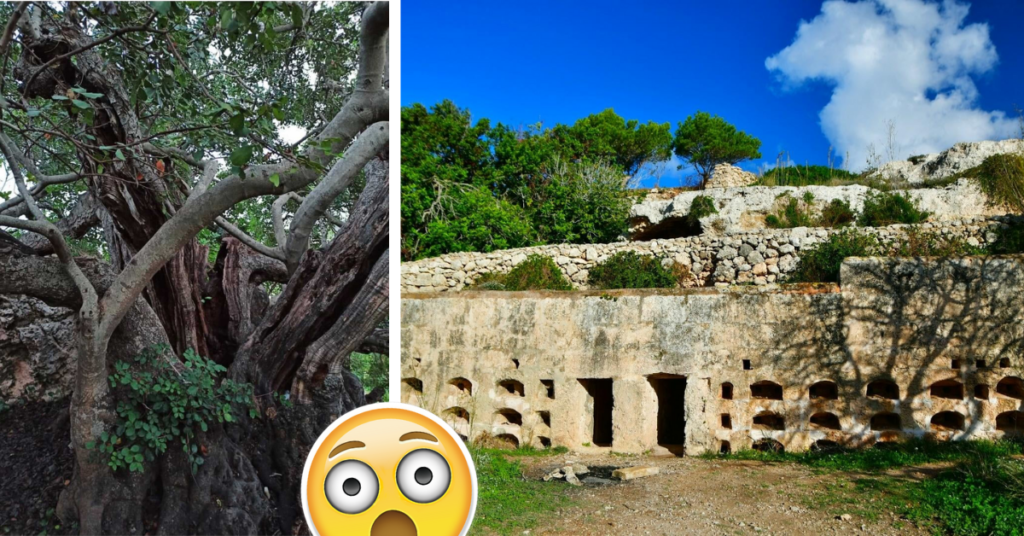Check Out Malta’s Oldest Carob Tree And Its Stunning Historical Surroundings

In this day and age, it can be difficult to remember Malta’s rich, natural history hidden beneath the concrete jungle. One thousand-year-old Maltese carob tree nestled along the Xemxija Heritage Trail is staking a claim to being one of the oldest trees on the island.
Dated as being around 1,000 years old, the ancient tree measures around 7.25 metres in circumference. It stands along what was once an Ancient Roman Road – just a short walk past the Roman Apiary, which itself is over 2,000 years old!
The Xemxija Heritage Trail also brings a combination of our environmental and archaeological history. Across the incredible walk, which links to the Mizeib woodlands, one will able to find everything from prehistoric cart ruts and megalithic temples to Roman baths, ancient granaries and cisterns.

The Xemxija Heritage Trail also includes several caves and structures that are believed to once have been tombs from the Neolithic period, with some of these being converted into Roman baths or having other uses during the Roman rule of Malta.
Several of these caves also remained inhabited by people, mostly farmers, until as recent as the 1930s. Throughout the Second World War, the nearby apiaries were also used as air raid shelters. Today, two of the four original apiaries have been restored to their original use and glory.
The typical Mediterranean tree species has long been a feature on the island dating back to the times of the Phoenicians, and their successors the Carthaginians, when Malta’s main focus was the cultivation of olives and carobs alongside the production of textiles.

Additionally, in the past carob seeds were used in order to weigh gold. This ancient system, which used these seeds to weigh against gold and gemstones, set the basis of the system we use today in the ‘carat’ unit of measurement.
Nowadays, the carob is most known as a healthy substitute to cocoa, being used to make chocolate bars and other chocolate substitutes alongside being used for animal feed. In times of war and food scarcity, such as what was experienced in World War Two, the use of carobs acted as a natural source of protein and carbohydrates.
Have you seen Malta’s oldest carob tree? Let us know!
